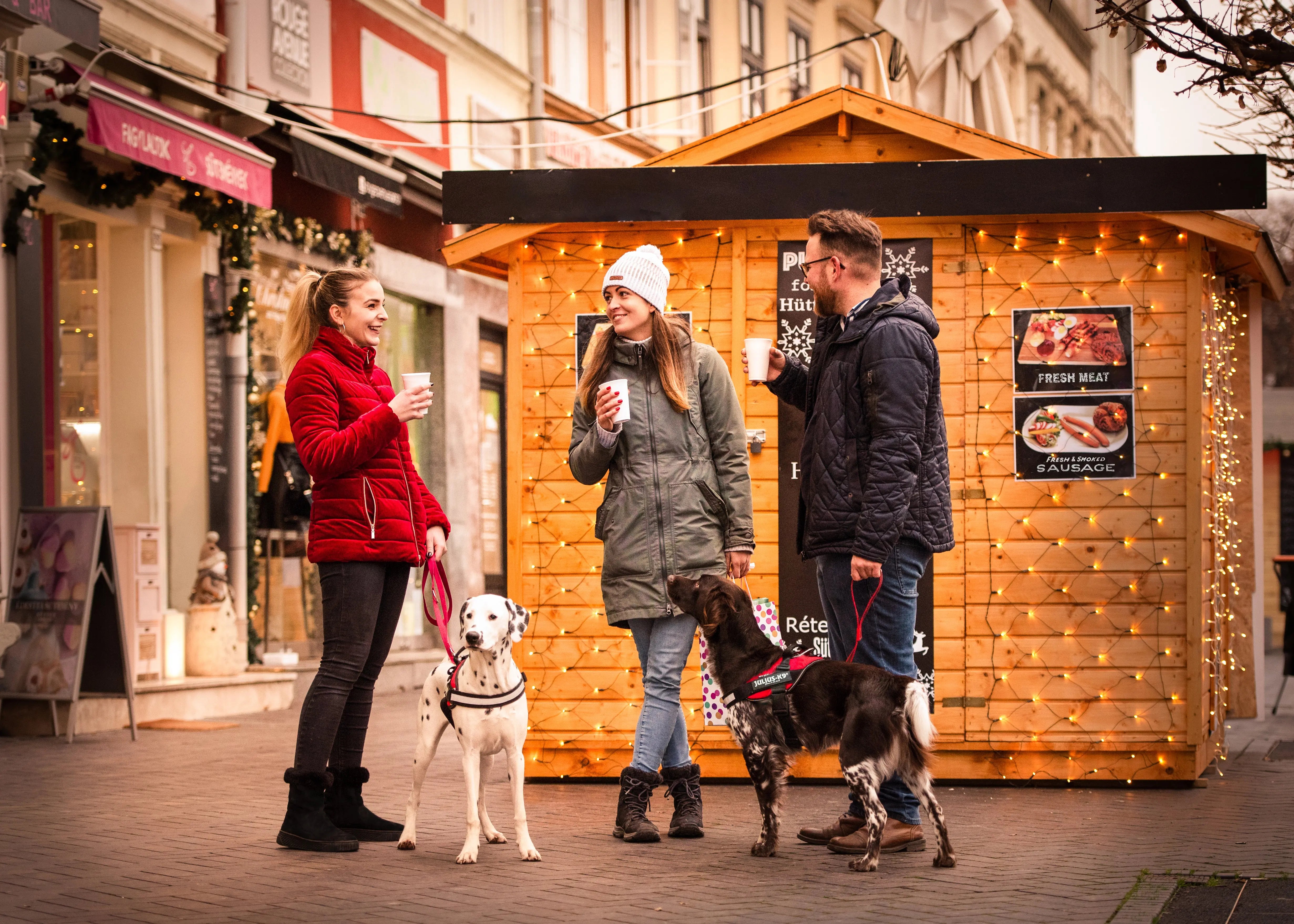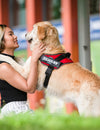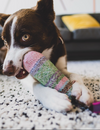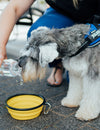
Having your dog meet other dogs or people they are unfamiliar with can be stressful – for you and your pet. But finding your dog a new playmate and getting them comfortable around different people is an important part of their behavioral development and a discipline they should know.
When meeting new people
It’s best to introduce your dog to new people where your dog feels most comfortable – usually in their own home. Below are five tips to help make meeting house guests go smoothly:
1) Keep your dog in a separate room before anyone arrives.
Dogs often get overly excited when people are greeting each other as they tend to feed off the energy in the room. So make sure everyone is settled before bring your dog out for introductions. You can always get them to ring ahead so you know when to move your dog into the safe space.
2) Dogs should make first contact.
When you bring the dog into the room to meet guests, ask them not to make a fuss and even ignore the dog at first. People can get quite excited at seeing a dog – especially puppies. If your dog is timid, too much enthusiasm from a stranger may frighten them or make them nervous. Or if your dog is excitable, they may become over stimulated, act erratically, and become very difficult to control. Allow your dog to approach new people first, sniff them out, and be the ones who initiates touching and contact.
3) First impressions matter.
Your dog will remember people and associate their first meeting with them whenever they see them again. So it’s very important to remember Point 2 above – let your dog make first contact. If your guest is very loud and boisterous at the first time of meeting, then a timid dog may be fearful of them in the future and this will take even more work to gain trust. On the flip side, if you have a very excitable dog and your guest matches this energy, whenever your dog sees them from then on you could have a very tough time calming them down.
4) Treats are always a great incentive for timid dogs.
If your dog continues to be shy, then treats are a great way of getting stranger and dog acquainted. Eye contact should still be avoid, but if your dog doesn’t want to take treats directly out of their hand then dropping them on the floor in front of them will help build trust.
5) Try and distract over excited dogs.
If your dog starts to become over excited around new guests then they might be feeding off the energy in the room. Try and keep things calm at the start of the greeting. Obviously you don’t want to sit around in silence for your guest’s entire visit, but explain to guests not be overly energetic with your dog. If your dog fails to calm down try and distract them with puzzle toys or long lasting chew treats and lick mats.
When meeting other dogs
A large, neutral open space is the best place for two dogs to meet. This doesn’t include one of the dog’s gardens as this will contain their scent. Try and find a field or local park and follow the below tips:
1) Tire them out.
An always useful tip is to make sure the dogs have had a good dose of exercise before they meet. This should help tire them out so they are more relaxed and not overly excited or aggressive.
2) Neutral territory.
If you bring your dog into another dog’s home then they are already at a disadvantage. The dog may well see any new dog as a treat to an environment where they feel safe and be aggressive. It would be best to choose an outdoor and neutral area where you will have enough room to do the next steps.
3) Parallel walking.
With both dogs on leads, each owner you should walk them a good few meters away from each other – far enough where they can’t interact but close enough so they are aware of one another. You should then double back over the ground the other dog has walked so they can get each other’s scent.
4) Side-by-side lead walks.
Once they’ve had a chance to get one another’s scent, you should try an easy side-by-side walk to further help familiarity. With both owners handling their own dog, take a five to ten minute casual walk side-by-side and try to keep direct contact between them to a minimum.
5) Be aware of the dog’s body language.
From the short walk you should get an idea on how the dogs are taking to one another. At this stage, no news is good news, but you should praise all positive interactions by making a fuss of them. You should also be aware of negative body language to help stop things getting aggressive. This can include:
- Head-to-head and butting heads.
- One dog putting their head over the other’s. This is a dominate gesture which can cause a retaliation.
- This seems obvious, but you shouldn’t let one dog mount the other.
6) Sniffing.
The most common and natural way dogs get to know one another is through sniffing. Still on their leads, position one dog in front of the other, then move the dog closer to the one in front. You may want to place a hand on the side of the front dog’s head to ensure they don’t turn around and snap. Once the dog has done sniffing they should walk away – that’s when it’s time to swap them around and do the same process for the other dog.
7) Ease them into it.
After the sniffing introduction, both dogs should be a little easier with each other. You should now let the dogs interact while still on leads. The obvious signs to watch out for are growing, direct staring, teeth showing/lip curling. Try to correct this behavior if possible. If you are unable to stop the aggression then you should separate them and try the side-by-side walk and sniffing introduction again. Sometimes, however, you just need to know when you’ve been defeated and try again on another day.
8) Off leash.
Once both dogs are calm and you are happy that they are not showing any aggressive body language, take them off-leash and let them play.





